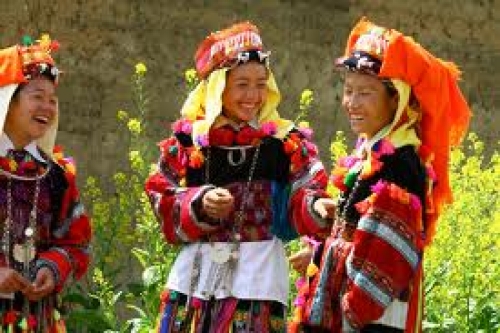Name of ethnic group: Lo Lo (Mun Di, Lo Lo Hoa and Lo Lo Den)
Population: 3,307 people (Year 1999)
Locality: Dong Van and Meo Vac districts of Ha Giang Province, Bao Lac District of Cao Bang Province and Muong Khuong District of Lao Cai Province.
Customs and habits: The Lo Lo mainly worship their ancestors. Their villages are located on mountain slopes close to sources of water. They live in grouped villages, each village having 20 to 25 houses. These houses are built either on stilts, half on stilts and half on the ground, or level with the ground. People of the same lineage live in the same village. The leader of the lineage is called the Thau Chu. This leader is responsible for ritual ceremonies and the preservation of the customs of that lineage. The Lo Lo practice monogamy and the wife comes to live in her husband's house after marriage. The Lo Lo use bronze drums for special occasions, but bury these drums in the earth for maintenance, and unearth them only for usage. The head of each family lineage is the keeper of the bronze drums. These drums are only used at funerals or to keep time during dances.
Culture: The Lo Lo language belongs to the Tibeto-Burman Group. Their written language used pictographic scripts which are no longer in use. The calendar of the Lo Lo divides the year into 11 months, each corresponding to the name of an animal. The folklore culture of the Lo Lo is diverse. It is expressed particularly well in dances, songs, and old tales. The Lo Lo people have a high level of education, as many are university graduates or they have finished secondary education.
Costumes: The Lo Lo Hoa women often wear a low-neck vest and a pair of trousers underneath a short skirt. Lo Lo Den men wear pajama-style trousers and a square necked vest pulled over their heads. Colourful designs are incorporated into their turbans, vests, skirts, and trousers.
Economy: The Lo Lo depend mainly on maize and rice as forms of income generation.






































































































